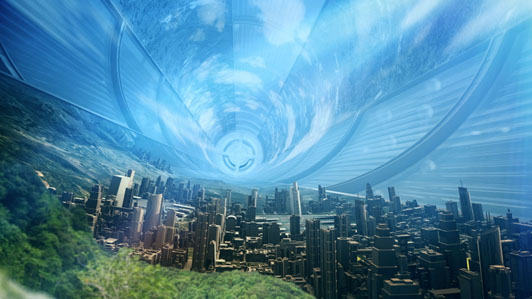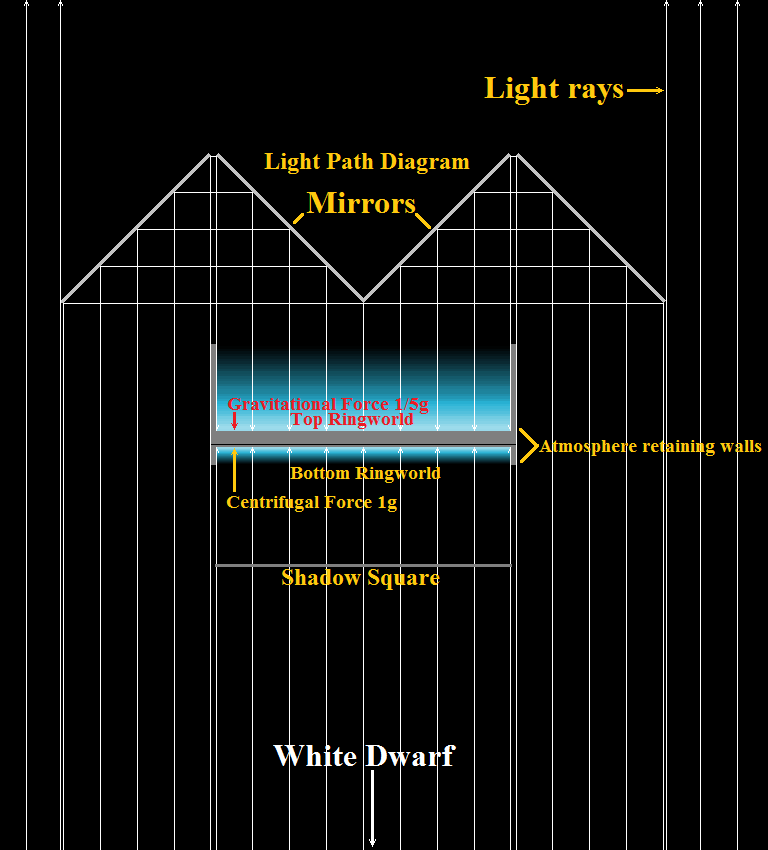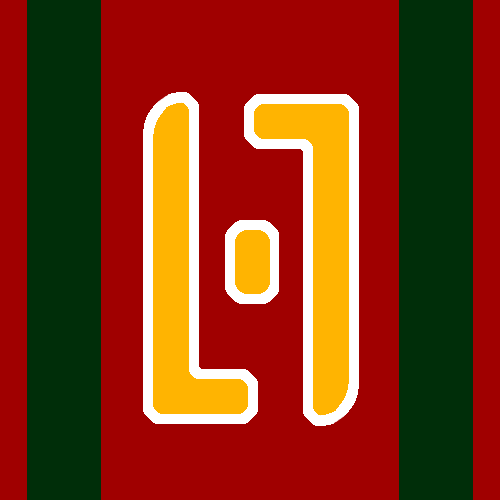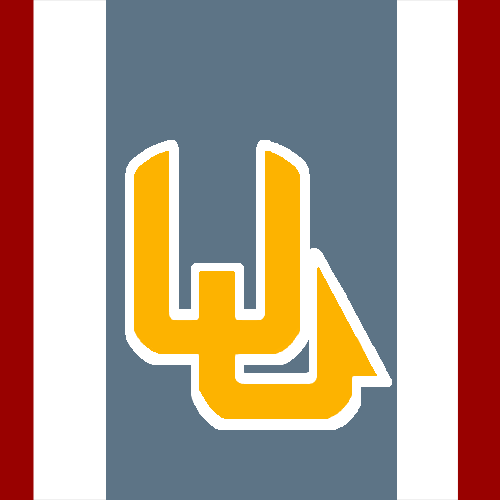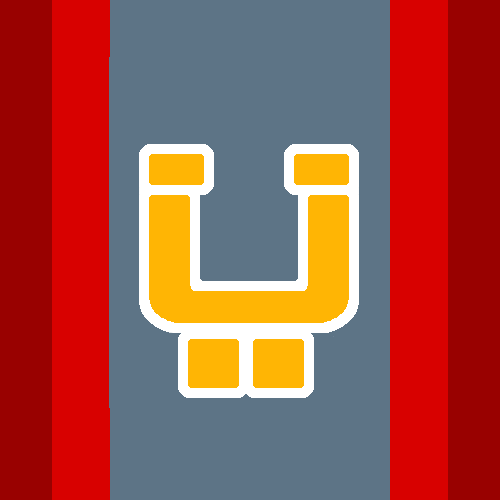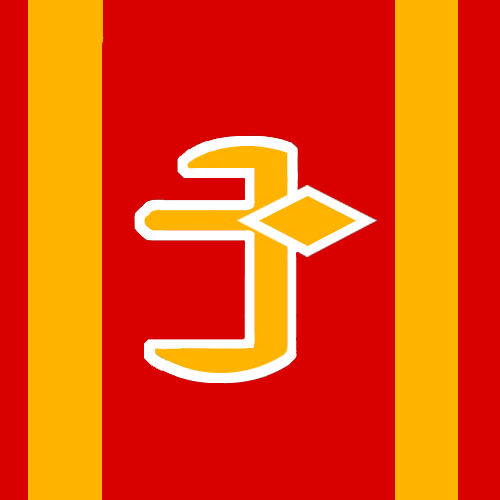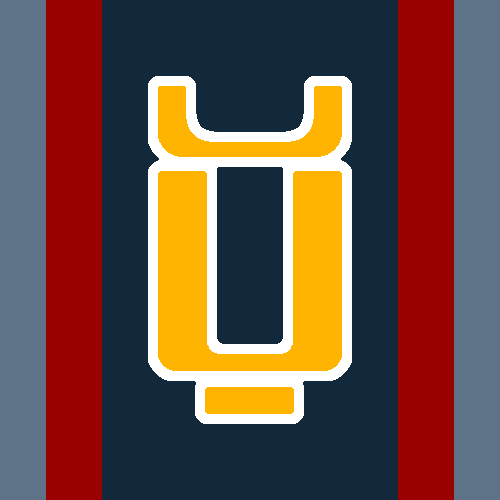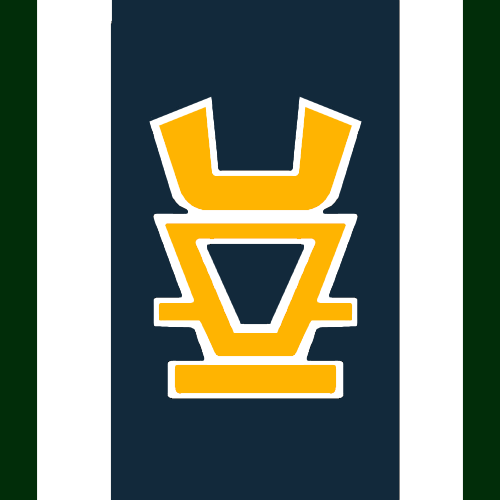This is just for fun, see if you can recognize the source.
Name: Cyrannus
Hex: 0420
Planets orbiting
Cyrranus Alpha G2 V Luminoscity 1.0, Mass 1.0, Habitability zone 0.95 AU to 1.67 AU
Distance from local primary: 0.2 AU (Orbit 0)
Name: Cyrannus Alpha I
UWP: X30A000-0
Size: 3 - 4,800 km
Atmosphere: 0 - vacuum
Hydrographics: A - Global ocean of magma
Population: 0
Government: 0
Law Level: 0
Tech Level: 0
Distance from local primary: 0.95 AU (Orbit 3)
Name: Cyrannus Alpha II
UWP: X868000-0
Size: 8 - 12,800 km
Atmosphere: 6 - Standard Atmosphere
Hydrographics: 8 - 75% water coverage
Population: 0? - population is unknown, signs of ruined cities very old!
Government: 0?
Law Level: 0?
Tech Level: 0? - ruins indicate probable 7 to 8 level civilization once existed on this planet, skeletal remains indicate a human population, radio-carbon dating indicates them to be 153,000 years old with a +/- certainty of 2000 years, signs of highways, and other artificial structures covered up with vegetation, traces of artificial elements, plutonium found in subsurface soil radioactivity is down to trace amounts, suitable for colonization (Imperial Scout Survey)

We found this emblem among the ruins on this planet, we suspect it might be a national flag, since it is displayed so prominently among what appears to be government buildings, still working on deciphering the language. From studying the ruins in the area, it appears fishing might be among the major industries here. We sampled some of the aquatic life forms, and found some Tuna and cod, a species native to Terra, we suspect some Ancient involvement in seeding this planet with life. Saw a statue of a fish tailed man with a trident, a survey member told me it appears as an ancient Terran god named Poseidon, such gods are no longer worshipped, but there was an ancient civilization called Greece, but the temple was 152,000 years old, so it must be a coincidence.
Distance from local primary: 1.01 AU (Orbit 3)
Name: Cyrannus Alpha IIIa
UWP: X867000-0
Starport: X - No Starport
Size: 8 12,800 km
Atmosphere: 6 - Standard
Hydrographics: 7 - 72% water coverage
Population: 0?
Government: 0?
Law Level: 0?
Tech Level: 0? ruins at 7-8 level of technology
Like Cyrranus Alpha II, this planet has signs of a previous Human civilization that is now destroyed, presumably by a nuclear war. This planet is also the slightly larger member of a double planet, both of who's members are nearly equal in mass and orbit around a common center, average distance between the two is 983,000 km orbital period is 28.2 days, the rotation rate of Cyrranis Alpha IIIa is fairly close to an Imperial Standard Day. Genetic analysis of some of the human remains indicate human cloning occured here, apparently the clones were on one side of the war and non-clone humans were on the other, extensive robotization was used on one side, the issue over which this war was fought is unknown. Attempts at translation of the various ruins is ongoing.
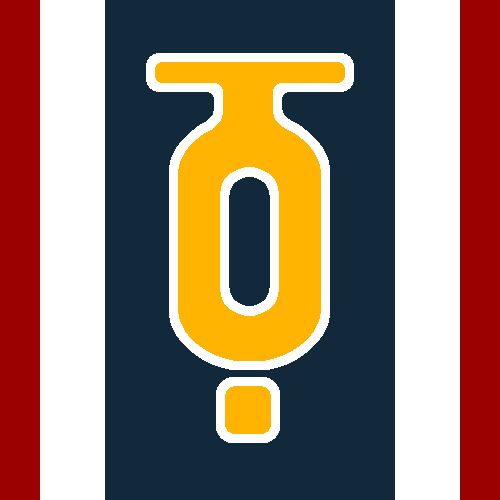
This was the main emblem displayed among the many government buildings on this world, the planet has seven continents including one situated on the South pole, its rotation rate comes very close to 24-hours, and its gravity is almost equivalent to Terra's. I saw a bald Eagle soaring in the skies above a harbor to the west of the continent we studied, a Bald Eagle! There was a huge city here, mostly piles of bricks and concrete under soil now One of the Survey members said it was almost like being on Earth, except for that "blue moon" in the sky which is actually a planet. This would be a nice place to settle someday, and it is a hugely valuable garden world to boot! The main difficulty is crossing the 4-parsec gap to get here, most starships we know of don't have Jump-4 Our survey vessle is the 500-ton Far Reach model, it comes with a Jump-4 engine, and so we were assigned to explore this system because of its "far reach!" It is a fairly large vessel, like a giant-sized version of the more standard 100-ton Scout/Courier that is so common throughout space.
Distance from local primary: 1.01 AU (Orbit 3)
Name: Cyrannus Alpha IIIb
UWP: X865000-0
Starport: X - No Starport
Size: 8 12,200 km
Atmosphere: 6
Hydrographics: 5 50% water coverage
Population: 0?
Government: 0?
Law Level: 0?
Tech Level: 0? Again signs of ruins of a previous human civilization, evidence of humaniform robots found on this plant. This planet is highly mountainous and rugged unlike the other of this pair, it is also a dryer world with only 50% water coverage.
There were a lot of temples and Idols on this planet, the above image is their flag I believe.
There is this emblem as well, we think its a stylized representation of a Phoenix rising out of the ashes, but we are not sure, after doing some exploration though the various cities on this rugged planet we came upon the remains of another temple, this one had no idol at all.
Instead it had this "infinity symbol" if that is what it is. There seems to be a lot of connection between these planets and ancient Greek culture on Terra, but I don't know how this can be. Well onto the next planet.
Distance from local primary: 1.6 AU (Orbit 4)
Name: Cyrannus Alpha IV
UWP: X963000-0
Starport: X - No Starport
Size: 9 14,400 km
Atmosphere: 6
Hydrographics: 3 30% water coverage
Population: 0?
Government: 0?
Law Level: 0?
Tech Level: 0?
As in the other planets mentioned, this planet indicate evidence of a nuclear war having occured in the past, radioactivity levels is down to a suitable level, Human skeletal remains, some clone some not found at various archaeological sites, extensive robot remains found as well.

After rumaging through the ruins of this dry and desolate planet, we turned up this symbols as being the probably national flag. I don't know what it is about this place, the gravity is sort of high, it has more land than water, and there seems to be all these temples to this war god, that we think is Ares, maybe there is some connection between them and Earth history, what it is, we don't know yet. As I said this planet is dry and desolate, it is on the edge of habitability while remaining habitable, the atmosphere is parched and dry in most places, that 30% hydrographic has got a lot of work to do in oxygenating this atmosphere. I wonder it it was this world that triggered this system wide holocaust of humans, one can only speculate until we can get a good translation. Maybe we will have better luck with ruins in space, since those don't seem to be effected as much by the elements as what's on the surface of these planets. However as far as habitable planets go, this planet's dry climate preserves them better than most.
Distance from local primary: 2.8 AU (Orbit 5)
Name: Cyrannus Alpha V
UWP: X000000-0
Starport: X - No Starport
Size: 0 - Asteroid Belt
wreckage of various spaceships found in the belt, some apparently were mining ships
Distance from local primary: 5.2 AU (Orbit 6)
Name: Cyrannus Alpha VI
UWP: Large Gas Giant
Cyrannus Beta K1 V Luminoscity 0.5, Mass 0.79, Habitability zone 0.56 AU to 1.1 AU
Distance from local primary: 0.4 AU (Orbit 1)
Name: Cyrannus Beta I
UWP: X200000-0
Starport: X - No Starport
Size: 2 3,200 km
Atmosphere: 0
Hydrographics: 0
Population: 0?
Government: 0?
Law Level: 0?
Tech Level: 0?
Distance from local primary: 0.7 AU (Orbit 2)
Name: Cyrannus Beta II
UWP: X866000-0
Starport: X - No Starport
Size: 8 12,400 km
Atmosphere: 6
Hydrographics: 6 60% water coverage
Population: 0?
Government: 0?
Law Level: 0?
Tech Level: 0?
More ruins were found on this planet, some kind of system-wide war was going on, seemed to have wiped out all of the humans on these planets, more of the robots were found, We don't know what relation these robots had with the war going on, or who employed them, more remains of the human close were discovered, interesting thing, the clones were all of 7 individuals, can't quite make it out, but the DNA evidence of the bones we found were unmistakable. interesting thing is, all the radioactivity should have wiped out other high level life forms on the planet, or else some of the humans should have survived, why they didn't we don't know. There is just too much ground to cover here and we're barely adequate to the task. We didn't expect to find 12 garden worlds in one system! I'll have to flag thus system as yellow, cause we don't know what wiped out all the humans in this system, for all we know the danger could still be present, however unlikely it may seem, since the events were talking about occurred 152,000 years ago. Sometimes, I get the feeling we're being watched, nothing on the sensors, must be just my nerves getting to me I guess.
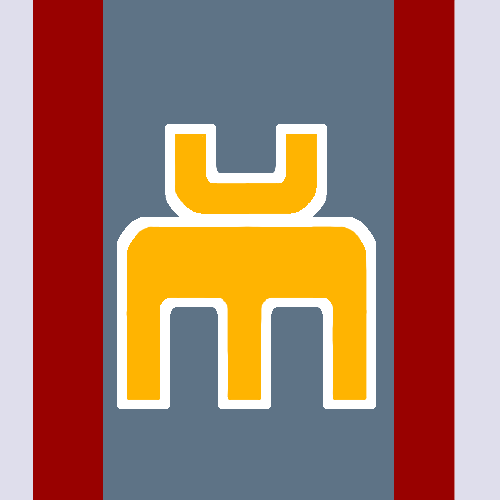
This seems to be the symbol of this world, a perusal of the ships library indicates that these symbols are astrological symbols, this one represents the constellation of Leo as seen from Terra What could that mean, a view of the sky around here doesn't indicate these constellations at all!, We've even regressed the stars constellations 150,000 years and we still don't come up with these constellations! I just don't get it!
Distance from local primary: 0.7 AU (Orbit 2)
Name: Cyrannus Beta IIIa
UWP: X410000-0
Starport: X - No Starport
Size: 8 12,900 km
Atmosphere: 1
Hydrographics: 0 0% water coverage
Population: 0?
Government: 0?
Law Level: 0?
Tech Level: 0?
Orbit inclined 30 degrees to the local ecliptic.
Distance from local primary: 0.7 AU (Orbit 2)
Name: Cyrannus Beta IIIb
UWP: X000000-0
Starport: X - No Starport
Size: 0 asteroid belt
Atmosphere: 0
Hydrographics: 0 0% water coverage
Population: 0?
Government: 0?
Law Level: 0?
Tech Level: 0?
Distance from local primary: 1.00 AU (Orbit 2)
Name: Cyrannus Beta IV
UWP: X869000-0
Starport: X - No Starport
Size: 8 12,700 km
Atmosphere: 6 - Standard
Hydrographics: 9 90% water coverage
Population: 0?
Government: 0?
Law Level: 0?
Tech Level: 0?
Planet has one large moon size 2
This is getting depressing, more evidence of destroyed cities on this planet too, more evidence of radioactivity, it doesn't make sense! Our Geiger counters all tell us the residual radiation levels are within acceptable levels, but still I get a creepy feeling here, I'll tell you one thing, I'll be glad hen this mission is over! As beautiful as these planets are, there is something sad about them as well.
This planet has lots of lovely forests, where it doesn't have ocean. There are no deserts at all! Those places where deserts would normally form, there is no land, the land we do find is forested, forests have grown over the ruins of these cities, we've found some temples to the goddess Aphrodite here we suppose, and Artemis was well, a whole pagan society, and I thought the Greeks invented it all!
Distance from local primary: 0.7 AU (Orbit 2)
Name: Cyrannus Beta V
UWP: Large Gas Giant with 2 moons
Cyrannus Gamma G9 V Luminoscity 0.41, Mass 0.89, Habitability zone 0.557 AU to 1.06 AU
Distance from local primary: 0.2 AU (Orbit 0)
Name: Cyrannus Gamma I
UWP: X869000-0
Starport: X - No Starport
Size: 5 8,000 km
Atmosphere: B - Corrosive
Hydrographics: 0 0% water coverage
Population: 0?
Government: 0?
Law Level: 0?
Tech Level: 0?
Distance from local primary: 0.4 AU (Orbit 1)
Name: Cyrannus Gamma II
UWP: X000000-0
Starport: X - No Starport
Size: 5 Asteroid Belt
Atmosphere: 0
Hydrographics: 0
Population: 0?
Government: 0?
Law Level: 0?
Tech Level: 0?
Distance from local primary: 0.7 AU (Orbit 2)
Name: Cyrannus Gamma III
UWP: X867000-0
Starport: X - No Starport
Size: 8 12,000 km
Atmosphere: 6 - Standard
Hydrographics: 7 70% water coverage
Population: 0?
Government: 0?
Law Level: 0?
Tech Level: 0?
another beautiful planet, more dead human remains, all bones partially fossilized of course. Today we found a frozen corpse high in the mountains, don't know what she was doing there, she had a slug thrower pistol and was wearing something that looked like a white lab coat underneath a parka, she was tall and beautiful once and one of the clones.
More dead cities, they are visible from space, but from the ground you can hardly see them at all, you see the odd brick lying around in the soil and the occasional piece of plastic. We found more robot parts today, looks like somebody attacked them with slug thrower weapons, is my guess.
It is hot here, I guess only a scorpion could love the place! Seriously, I think this planet is at the edge of a runaway greenhouse effect, there are lots of lizards and reptiles, and a few larger than normal insects. I guess I ought to blame the high oxygen content of this atmosphere for that better be careful with matches!
Distance from local primary: 0.85 AU (Orbit 2.5)
Name: Cyrannus Gamma IV
UWP: X866000-0
Starport: X - No Starport
Size: 8 12,500 km
Atmosphere: 6 - Standard
Hydrographics: 6 60% water coverage
Population: 0?
Government: 0?
Law Level: 0?
Tech Level: 0?
More ruined cities here, more nonfunctional robots, we've been gathering parts from one type of robot, I think we can get enough together to see what one looked like, I can see it has a slug thrower pistol in a built-in holster in its hip, long spindly metallic fingers too, stands about 2 meters tall, maybe a bit more than that, these things give me the creeps! I doubt if it could be made to function again, the electronic parts are too far corroded to work is my guess. Found one of those robot fighters, no room for a pilot, I don't know what controlled it from that empty compartment, but I don't see any controls in there.
Lots of government buildings here and a few libraries as well, as for the natural landscape it is so so, some mountains, a few deserts, not much different from Caprica really although the Sun is a bit yellower here, and the planet sports a ring system instead of a moon!
Distance from local primary: 1.00 AU (Orbit 3)
Name: Cyrannus Gamma V
UWP: X852000-0
Starport: X - No Starport
Size: 8 12,100 km
Atmosphere: 5 - Thin
Hydrographics: 2 20% water coverage
Population: 0?
Government: 0?
Law Level: 0?
Tech Level: 0?
Very dry here. the places that aren't dry are like the plains of Africa, lots of savannah. The city ruins indicate a lot of small family domiciles, and vast empty spaces where there was nothing at all, poorly built structures do not stand the test of time.
Distance from local primary: 1.6 AU (Orbit 4)
Name: Cyrannus Gamma VI
UWP: Small Gas Giant
Cyrannus Delta K2 V Luminoscity 0.34, Mass 0.74, Habitability zone 0.47 AU to 91 AU
Distance from local primary: .2 AU (Orbit 0)
Name: Cyrannus Delta I
UWP: X310000-0
Starport: X - No Starport
Size: 3 4,700 km
Atmosphere: 1 - Trace
Hydrographics: 0 0% water coverage
Population: 0?
Government: 0?
Law Level: 0?
Tech Level: 0?
Distance from local primary: .4 AU (Orbit 1)
Name: Cyrannus Delta II
UWP: X000000-0
Starport: X - No Starport
Size: 0 Asteroid Belt
Atmosphere: 0 - Trace
Hydrographics: 0 0% water coverage
Population: 0?
Government: 0?
Law Level: 0?
Tech Level: 0?
Distance from local primary: .7 AU (Orbit 2)
Name: Cyrannus Delta III
UWP: Small Gas Giant
Distance from local primary: .7 AU (Orbit 2)
Name: Cyrannus Delta IIIa
UWP: X869000-0
Starport: X - No Starport
Size: 8 13,000 km
Atmosphere: 6 - Standard
Hydrographics: 8 80% water coverage
Population: 0?
Government: 0?
Law Level: 0?
Tech Level: 0?
This planet is located in the previous Gas Giant's Trojan Point 60 degrees ahead in its orbit.
Nice planet, one of our crewmates went missing today, I don't know what happened to him, we're forming a search party, so far no luck. As far as what we found here, you guessed it, more dead cities!
Note: Never found Paul, damn! I really hate writing these letters to their parents!
Aside from our misfortune with our comrade, this looks like it was once an agricultural planet, judging by the feral fruit trees we keep finding in its forests, The land is smooth and the geographic features are not very exciting, good place for growing crops though, once we clear some forests!
Distance from local primary: .7 AU (Orbit 0)
Name: Cyrannus Delta IIIb
UWP: X869000-0
Starport: X - No Starport
Size: 8 12,800 km
Atmosphere: 6 - Standard
Hydrographics: 9 90% water coverage
Population: 0?
Government: 0?
Law Level: 0?
Tech Level: 0?
More dead cities, and a pirate base, not one of the locals unfortunately, have to inform the Navy about them, once we get out of here! this planet is located 60 degrees behind the gas giant.
lots of lovely beaches here, no chance of getting a decent suntan here though, not with an orange sun!. I have a feeling that with the few important buildings and lots of empty spaces and poor urban development, we are looking at another poor society, lots of hovels that didn't stand the test of time, this is mostly a water world, lots of island, palm trees, and is that a parrot? Why yes it is! You know I have a feeling someone visited this place after the holocaust that wiped out the humans, there are some mechanical remains that date sometime after the holocaust happened, the fossil records indicate the reappearance of species that previously disappeared due to the war. No that's not quite right, the new species are more closely related to Terra than the ones that disappeared.
Distance from local primary: 0.9 AU (Orbit 0)
Name: Cyrannus Delta IV
UWP: X869000-0
Starport: X - No Starport
Size: 8 12,500 km
Atmosphere: 6 - Standard
Hydrographics: 9 90% water coverage
Population: 0?
Government: 0?
Law Level: 0?
Tech Level: 0?
This cold world has just one cresent-shaped continent with volcanoes at both ends, and it has a pair of very large ice caps at both poles, there are a bunch of insignificant islands in the equatorial ice free ocean as well, as far as we can tell the same fate befell the humans on this planet as in all the others, digging through the ruins we found this last symbol of this world.
Distance from local primary: 1.1 AU (Orbit 0)
Name: Cyrannus Delta VI
UWP: X6A5000-0
Starport: X - No Starport
Size: 6 9,600 km
Atmosphere: A - Exotic
Hydrographics: 5 50% water coverage
Population: 0?
Government: 0?
Law Level: 0?
Tech Level: 0?
Distance from Gamma-Delta Epicenter: 110 AU (Orbit 0)
Name: Cyrannus Gamma-Delta I
UWP: Large Gas Giant
Derelic orbital installation found orbiting this gas giant, some examples of a new kind of Jump drive now under study by Scout Survey, radiation environment plays havoc with ships sensors, ionized gas cloud found within this gas giant's magnetic field. On this station we found some recorded messages, hard to believe, but their are some optical disks here. After doing some experiments, we were able to play them. (I don't know why they cut corners into these disks to make the octogonal shaped.) We got to listen to some music and saw some entertaining videos, our linguists are studying them, hoping to decipher their language and their alphabet so we can do some translation. Our computers are parsing their recordings and hopefully we'll get a translation program going soon!
Bases: Pirate Base on Cyrannus Delta IV
Trade Classification: Barren, Garden Worlds (12)
Zone: Yellow because of pirate activity in this star system
Population: 0?
Planetoid Belts: 4
Gas Giants: 5, 3 Large, 2 Small
Stellar Data: Quadruple Star System (Cyrannus Alpha G2 V, Cyrannus Beta K1 V), (Cyrannus Delta G9 V, Cyrannus Gamma K2 V) The distance between the Alpha-Beta epicenter and the Gamma-Delta Epicenter is 10,091 AU. (0.16 light years) The distance between Cyrannus Alpha and Beta is 126 AU, and the distance between Cyrannus Gamma and Cyrannus Delta is 140 AU. There are 12 garden worlds in this System, they are as yet unnamed so they are given names based on the orbits they are found in.
Stepping out of character:
Just thought I'd mention, if you want to look at a map of this system, with all the planet's actual names, though the PCs at first won't know them, the map can be found here:
http://media.battlestarwiki.org/images/9/98/Quantum_Mechanix_The_Twelve_Colonies_of_Kobol.jpg
http://en.battlestarwiki.org/wiki/The_Twelve_Colonies_Of_Kobol

